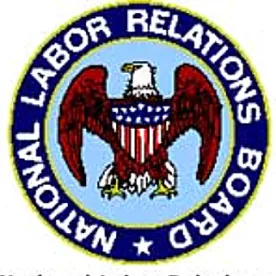In December 2012, the NLRB reversed the 1978 ruling of the Board in Anheuser-Busch, Inc., 237 NLRB 982 (1978), where the full Board (without dissent) held that employee witness statements received by employers were exempt from disclosure when requested by a union. See Piedmont Gardens, 359 NLRB No. 46 (2012). The 2014 Supreme Court decision in NLRB v. Noel Canning invalidated that 2012 decision along with more than 700 other reported and unreported decisions of the Board. However, like a bad penny, the Board’s reversal of the long standing Anheuser-Busch rule has come bouncing back.
In its most recent iteration of Piedmont Gardens, 362 NLRB No. 139, a divided NLRB again nixed the rule in Anheuser-Busch applicable to witness statements, replacing it with a new test. The new test, which is inherently subjective in nature, balances the union’s need for the information against “any legitimate and substantial confidentiality interests established by the employer.” This test will not be easy for employers to apply when considering a union’s request, let alone meet. The Board’s majority decision states: “Establishing a legitimate and substantial confidentiality interest requires more than a generalized desire to protect the integrity of investigations.” Instead, the Board will now require a case-by-case showing as to whether in any employer investigation:
-
A witness needs protection;
-
Evidence is in danger of being destroyed;
-
Testimony is in danger of being fabricated; or
-
There is a need to prevent a cover up
Only if this initial showing(s) is met by the employer will the NLRB then weigh the employer’s interest against the union’s purported need for the information. And, even if a “legitimate and substantial” confidentiality interest is established, an employer will still have to seek an accommodation with the union. The Board’s decision suggests such accommodations may include the employer seeking a confidentiality/non-disclosure agreement or providing a summary of a witness statement. Of course, for employers this means to avoid litigation of the issue it will be necessary to get the union’s cooperation.
The problems with the Board’s ad-hoc approach, especially in today’s highly regulated workplace, are manifest. Typically, employers must promise some level of confidentiality to get employees to speak up about topics such as sexual harassment, bullying, illegal drug use, etc. Many employer policies, in fact, promise such confidentiality. Such promises are, in fact, consistent with other employer legal obligations under laws like Title VII. The NLRB majority, however, gave rather short shrift to such concerns (though they were vigorously raised by the two dissents).
Moreover, the NLRB’s threshold test to establish a putative need to invoke confidentiality seemingly puts the cart before the horse. In many cases only after a witness statement has been requested and disclosed will it become apparent that a witness is then being targeted, retaliated against, or pressured, or that other evidence will be destroyed or fabricated to counter the actual content of the statement. In other words, prior to disclosure, evidence may not even exist to meet the Board’s test because the content of the statement (good or bad) is not generally known. However, by the time the consequences of disclosure are discovered, it will often be too late and it will be all but impossible to put the proverbial toothpaste back in the tube. The damage to the integrity of the employer’s investigation will have been done.
None of this, however, troubled the Board majority; nor did the fact that retaliation and bullying are empirical and unfortunate realities of the modern workplace. Rather, the Board majority gave such concerns lip service, suggesting an employer can mollify its concerns by simply seeking a non-disclosure agreement from the union. But what of the union’s need to share information with the target to meet its duty of fair representation? In the author’s experience, this is an oft-stated objection by the union to such agreements. These and other unknown real-life consequences (apparently not explored by the Board) are now all questions for the future.
Bottom line: Under the Board’s new test, employers may find co-employees more reluctant than ever to speak up both for themselves and others. Unfortunately, this can only undermine any number of other employer and employee interests, interests the current trend of NLRB decisions seem all but oblivious to.




 />i
/>i
